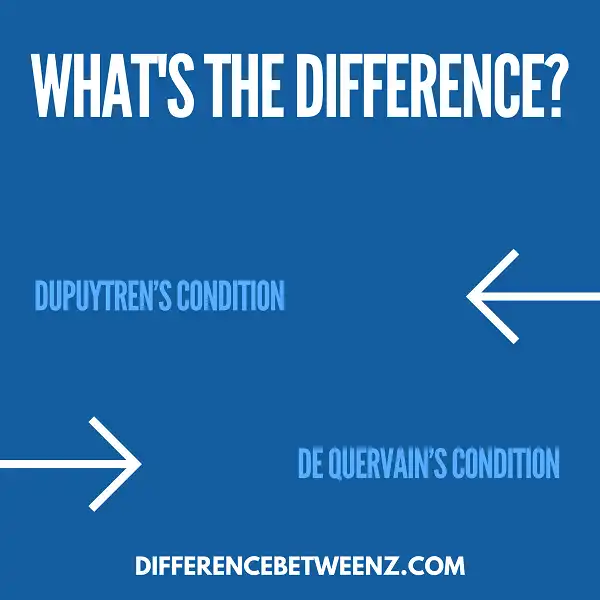Dupuytren’s conditions and De Quervain’s conditions are two separate medical conditions that can cause discomfort in the hands. While both conditions can be treated, it is important to understand the differences between them in order to receive the correct treatment.
What is Dupuytren’s Condition?
Dupuytren’s condition, also known as palmar fibromatosis, is a disorder of the connective tissue that results in the formation of thickened cords of tissue beneath the skin of the palm. These cords can gradually contract, causing the affected fingers to bend inward toward the palm. Dupuytren’s condition is most common in middle-aged and elderly adults, and it tends to run in families.
The exact cause of the condition is unknown, but it is thought to be associated with a combination of genetic and environmental factors. There is no cure for Dupuytren’s condition, but treatment can improve symptoms and help prevent deformity. Early intervention is important to achieve the best possible outcome. If you think you or someone you know may have Dupuytren’s condition, consult a doctor for diagnosis and treatment options.
What is De Quervain’s Condition?
De Quervain’s condition is a condition that results in the inflammation of the tendons in the thumb. The condition is also known as De Quervain’s tenosynovitis or De Quervains disease. The condition is caused by repetitive motion of the thumb, which leads to the inflammation of the tendons. The symptoms of De Quervain’s condition include pain and tenderness in the thumb, difficulty moving the thumb, and swelling in the thumb. The condition can be treated with rest, ice, and anti-inflammatory medication. Surgery is also an option for severe cases of De Quervain’s conditions.
Difference Between Dupuytren’s and De Quervain’s Conditions
Dupuytren’s condition and De Quervain’s condition are both conditions that can cause pain and stiffness in the hands. However, there are some key differences between the two conditions.
- Dupuytren’s condition is caused by the thickening of connective tissue in the palm of the hand, which can lead to the formation of lumps or bands of tissue under the skin.
- De Quervain’s condition, on the other hand, is caused by inflammation of tendons in the wrist and thumb. Both conditions can be painful and limit mobility in the affected hand.
- However, treatment for Dupuytren’s condition typically involves surgery to release the affected tissue, while treatment for De Quervain’s condition usually consists of rest, ice, and anti-inflammatory medications.
As a result, it is important to see a doctor if you are experiencing pain or stiffness in your hand so that an accurate diagnosis can be made.
Conclusion
Dupuytren’s Condition is a thickening and shortening of the palmar fascia, which can cause contracture of the fingers. It most commonly affects the ring finger and little finger, but can also affect the thumb, index finger, or middle finger. Dupuytren’s Contracture usually develops gradually over time. There is no known cure for Dupuytrens Contracture, but treatment options are available to help keep the condition from getting worse. -De Quervain’s Condition is a type of tendinitis that affects the wrist. The tendon involved is called the extensor pollicis brevis (EPB) tendon. De Quervain’s Tendinitis causes pain and swelling on the thumb side of your


